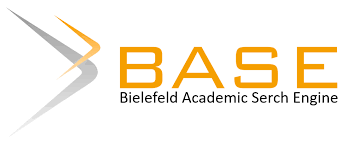KAPASITAS KNOWLEDGE MANAGEMENT UNTUK MENINGKATKAN KERJASAMA DAN INOVASI DALAM PERUSAHAAN (Suatu Tinjauan Teoritis)
(1)
(2)
(3)
(*) Corresponding Author
Sari
The purpose of this paper is to study the capacity of Knowledge Management in a theoretical review and aims to understand how companies can strengthen the context of the cooperative elements that exist within the organization to generate innovation. The method used in this paper is the library method based on empirical studies from the results of previous studies and literature studies.
The justification of the absorptive capacity typology for innovation efficiency processes has the potential to influence the absorption realized in new products and cause effects on internal research and development in various ways. The impact of joint ventures, supplier cooperation and customer cooperation is significant on absorption.
The implication in this paper is to extend the research to other innovation metrics as new organizational methods, new processes, new designs, or new methods of using sales funnels.
This paper considers it necessary to analyze the typology of capacities that enable managers to understand the innovation efficiency process in the context of collaboration and make better decisions. Collaboration of collaborative activities, organizational capacity and objectives in internal research and development can obtain higher innovation results.
Teks Lengkap:
PDFReferensi
Andersén, J. (2012). Protective capacity and absorptive capacity: Managing the balance between retention and creation of knowledge-based resources.Learning Organization, 19(5), 440-452.
https://doi.org/10.1108/09696471211239730
Aribi, A., & Dupouët O. (2016). Absorptive capacity: A non-linear process. Knowledge Management Research & Practice, 14, 15-26. https://doi.org/10.1057/kmrp.2014.17
Basuki, 2015, Pengaruh Praktik Sumber Daya Manusia Strategik Dan Knowledge Management Terhadap Kinerja Organisasi, Al Kalam Jurnal Komunikasi Bisnis dan Manajemen, Vol.2 No.4 Juli 2015.
Basuki, 2020. Pengantar Metode Penelitian Kuantitatif, Penerbit Media Sains Indonesia, Bandung.
Beneito, P., Rochina, M., & Sanchis, A. (2011). La experiencia en I+D como factor determinante de la innovación. Papeles de Economía Española, 127, 89-104.
Capaldo, A., & Messeni, A. (2015). Origins of knowledge and innovation in R&D alliances: a contingency approach. Technology Analysis & Strategic Management, 27(4), 461-483.
https://doi.org/10.1080/09537325.2015.1011612
Díaz-Díaz, NL, & Saá-Pérez, P. (2014). The interaction between external and internal knowledge sources: An open innovation view. Journal of Knowledge Management, 18(2), 430-446. https://doi.org/10.1108/JKM-07-2013-0257
Grandinetti, R., (2016). Absorptive capacity and knowledge management in small and medium enterprises. Knowledge Management Research & Practice, 14, 159-168.
Hagemeister, M., & Rodríguez-Castellanos, A. (2010). Organisational capacity to absorb external R&D: industrial differences in assessing intellectual capital drivers. Knowledge Management Research & Practice, 8(2), 102-111.
Lowik, S., Kraaijenbrink, J., & Groen, A. (2016). The team absorptive capacity triad: A configurational study of individual, enabling, and motivating factors. Journal of Knowledge Management, 20(5), 1083-1103.
Lucena, A., & Roper, S. (2016). Absorptive capacity and ambidexterity in R&D: Linking technology alliance diversity and firm innovation. European Management Review, 13(3), 159-178.
Mariano, S., & Walter, C. (2015). The construct of absorptive capacity in knowledge management and intellectual capital research: content and text analyses. Journal of Knowledge Management, 19(2), 372-400.
Martelo-Landroguez, S., & Cegarra-Navarro, G.-J. (2014). Linking knowledge corridors to customer value through knowledge processes. Journal of KnowledgeManagement, 18(2), 342-365.
Messeni, A., Rotolo, D., & Albino, V. (2012). The Impact of old technologies on innovation: The case of the US biotech. Industri. Technology Analysis & Strategic Management, 24(5), 453-466.
Nieminen, H. (2005). Organizational receptivity. Understanding the inter-organizational learning ability. Electronic Journal of Knowledge Management, 3(2), 107-118.
Nurcahyo, Satria Avianda, Tri Wikaningrum, 2020, Peran Knowledge Sharing, Learning Organization Dan Individual Innovation Capability Terhadap Kinerja Karyawan. Jurnal Ekonomi Dan Bisnis Vol. 21, No.2, Juli 2020 : 1 – 25.Ojo, AO, Raman. M., & Chong, CW (2016). Individual differences and potential absorptive capacity in joint project teams in the Nigerian upstream oil industry. VINE Journal of Information and Knowledge Management Systems, 46(1), 45-63.
Paulsen, JM, & Hjertø, KB (2014). Exploring individual-level and group-level levers for inter-organizational knowledge transfer. The Learning Organization, 21(4), 274-287.
Rezaei, M., & Darwish, TK (2016). Antecedents of absorptive capacity: A new model for developing learning processes. The Learning Organization, 23(1), 77-91.
Rofiati, Tri Novianti, Angga Tri Mulyanto, 2015, Pengaruh Knpwledge Management terhadap Inovasi: Implementasi Strategi dan Kinerja Organisasi (Studi Pada RS Lavalette Malang), Jurnal Ekonomi Bisnis Tahun 20, Nomor 1, Maret 2015, hlm 1-52
Sánchez, P., Rosell, J., & García, JM (2013). Innovation as a driver of absorptive capacity from foreign direct investment in Spanish manufacturing firms. Procedia - Social and Behavioral Sciences, 75, 236-245.
Setyowati, T., 2012, Manajemen Inovasi Berbasis Pengetahuan di Perusahaanperusahaan Kecil, Menengah, dan Besar: Survei pada Industri Barang Konsumsi di Jawa Barat, Industrial Research Workshop and National Seminar 2012 ISBN 978-979-3541-25-9, hal.418-438.
Sun, P. (2010). Five critical knowledge management organizational themes. Journal of Knowledge Management, 14(4), 507-523.
Tseng, Pai, DC, & Hung, CH (2011). Knowledge absorptive capacity and innovation performance in KIBS. Journal of Knowledge Management, 15(6), 971-983.
Van der Heiden, P., Pohl, C., Mansor, S., & Van Genderen, J. (2016). Necessitated absorptive capacity and metaroutines in international technology transfer: A new model. Journal of Engineering and Technology Management, 41, 65-78.
Wang,C., & Han, Y. (2011). Linking properties of knowledge with innovation performance: the moderate role of absorptive capacity. Journal of Knowledge Management, 15(5), 802-819.
DOI: http://dx.doi.org/10.31602/alsh.v7i2.5740
Refbacks
- Saat ini tidak ada refbacks.
Al-Ulum : Jurnal Ilmu Sosial dan Humaniora by https://ojs.uniska-bjm.ac.id/index.php/ALSH is licensed under is licensed under a Creative Commons Attribution-ShareAlike 4.0 International License.












